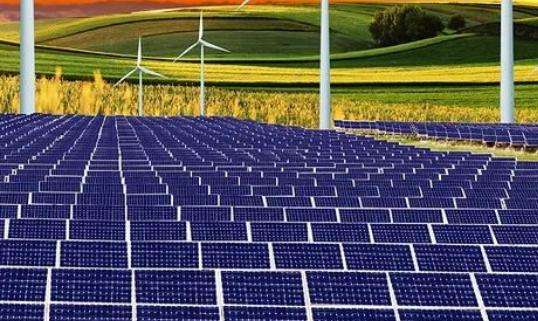Renewable resources on earth include forest resources, pasture resources, water resources, land resources, solar energy resources, ocean energy resources, geothermal resources, climate resources, etc.
The regeneration of renewable resources on earth includes:
(1) Those that can increase in quantity through growth and reproduction, such as forest resources, grazing, animal resources, etc. .;
(2) Resources that can be regenerated by recycling, such as water resources, etc.;
(3) Resources that can be reused, such as land resources, climate resources, etc.;
(4) Huge and inexhaustible resources, such as solar energy resources, ocean energy resources, geothermal resources, etc.
Excuse me: nuclear power and energyoceanic do they come from the sun? Are they renewable energy?
Renewable resources:
1. Solar energy
It comes from the enormous radiation energy released by the fusion of the nuclei of hydrogen atoms inside the sun. Almost all of the energy needed by humans comes directly or indirectly from solar energy.
2. Geothermal energy
It is the natural thermal energy extracted from the earth's crust. This energy comes from lava inside the earth and exists in the form of heat. which causes volcanic eruptions and earthquakes.
3. Hydraulic energy
Hydraulic resources are one of the sources of energy. They belong to the category of water resources and are part of water resources. Generally refers to the natural energy production of water in rivers or tides over long periods of time. The height ist an influencing factor of energy or water power, measured in kilowatts or horsepower.
4. Wind energy resources
It is an available energy resource provided to humans through the work done by the wind. The kinetic energy of wind is called wind energy. The faster the wind speed, the greater the kinetic energy.
5. Biomass energy
refers to various organisms formed by the photosynthesis of green plants, including all animals, plants and microorganisms. Biomass energy is the energy form of solar energy stored in living things in the form of chemical energy, with biomass being the energy carrier.
6. Ocean energy
is a renewable energy generated during the movement of sea water, mainly including temperature difference energy, tidal energy, wave energy, ocean energy tidal, the energy of ocean currents and salinity. energy difference, etc. Tidal energy and current energy come from the gravity of the moon, sun and other planets, and other ocean energies come from solar radiation.
Non-renewable resources:
1. Mineral Resources
Due to the continuous and increasing mining of human beings, the reserves of mineral resources are gradually decreasing, and some are on the verge of expiring. The speed of mineral formation cannot be compared with the speed of human development, which is why mineral resources are considered non-renewable.
2. Soil resources
A natural body formed over a long geological period. Therefore, some people view soil as a non-renewable resource or an environmental element that is difficult to exploit. restore. Unreasonable development and use of land par populations will lead to a loss of soil resources; especially soil pollution, this will lead to changes in the composition, structure, properties and functions of the soil, such as a loss of fertility and purification capabilities, otherwise desertification occurs.
3. Coal resources
Coal is a sedimentary organic mineral transformed from plant remains by biochemical and physicochemical reactions.
4. Petroleum
Petroleum is made from the “kerogenic” organic matter present in the formation. After being refined by the ground temperature for a long time, it is generated little by little and. floats in the formation. Due to buoyancy, oil in the water slowly rises along strata or faults each year until it is blocked by a closed, oil-impermeable stratum and stops. As the oil insideThe heart of this enclosure is accumulating more and more.
5. Natural gas
Natural gas is a hydrocarbon, which is mainly produced when crude oil is extracted in mining areas. In the past, it could not be transported across the ocean. it could therefore only be used locally. Natural gas mainly consists of hydrocarbons such as methane, ethane, propane and butane, of which methane accounts for 80-90%. Natural gas can generally be divided into four types: pure natural gas, oil-associated gas, condensate gas, and mine gas.
6. Nuclear fuel
Nuclear energy, also called atomic energy, is a high-efficiency, long-lasting energy source. Nuclear power generation uses the nuclear fission chain reaction of uranium 235 to release a large amount of thermal energy, transforming water into water vapor and using that steamto drive a generator to produce electricity.
Baidu Encyclopedia - Non-Renewable Energy
Baidu Encyclopedia - Non-Renewable Resources
Baidu Encyclopedia - Renewable Resources
The The energy source of the ecosystem is solar energy, and the flow of energy in the ecosystem begins when green plants fix solar energy through photosynthesis. The marine ecosystem is also a natural ecosystem and is undoubtedly a source of renewable energy. Nuclear energy comes from the energy contained in nuclear ore. Nuclear ore is a mineral resource, and mineral resources are non-renewable resources, so it is a non-renewable energy source.














